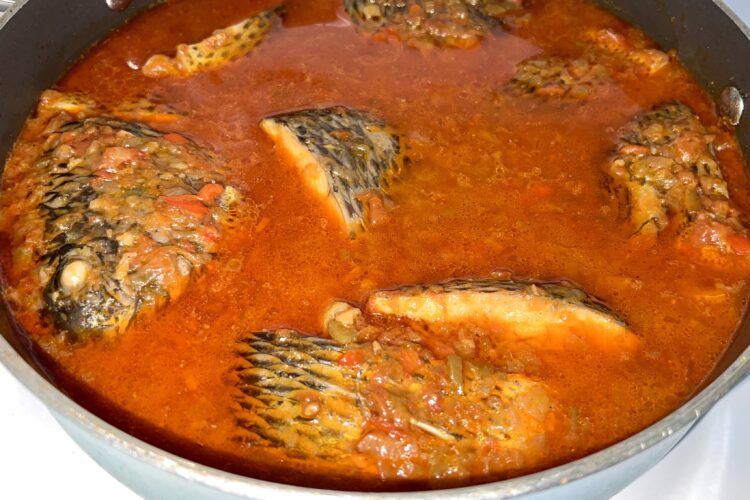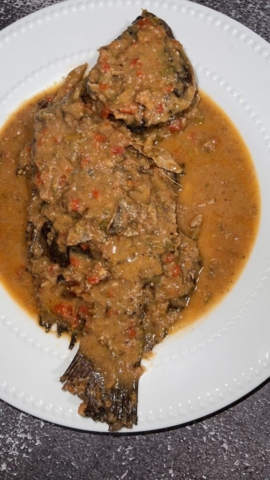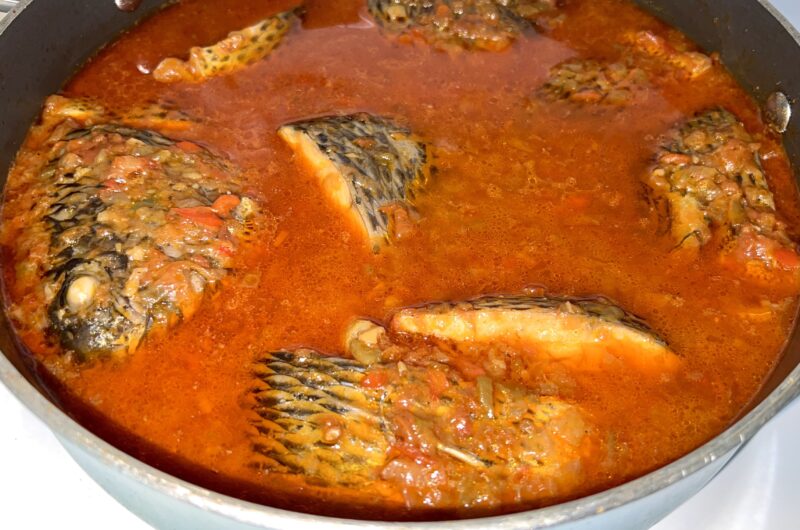This post may contain affiliate links, which means I may receive a commission from purchases made through the links.
Tilapia is a freshwater fish popular in many parts of the world due to its desirable characteristics. Although native to Africa, tilapia is widely produced and consumed worldwide with countries like the Philippines, China, and the United States being some of the largest consumers according to Wikipedia. As a Kenyan, I must say I was quite shocked (and impressed) when I first encountered whole tilapia in an American grocery store when I had just moved into the country. I wasn’t expecting it. Of course, I grabbed a pack right away, went home and made myself some delicious Kenyan-style fresh tilapia stew, and shared pictures with my family who were also surprised that whole tilapia was available in this part of the world… but I digress.
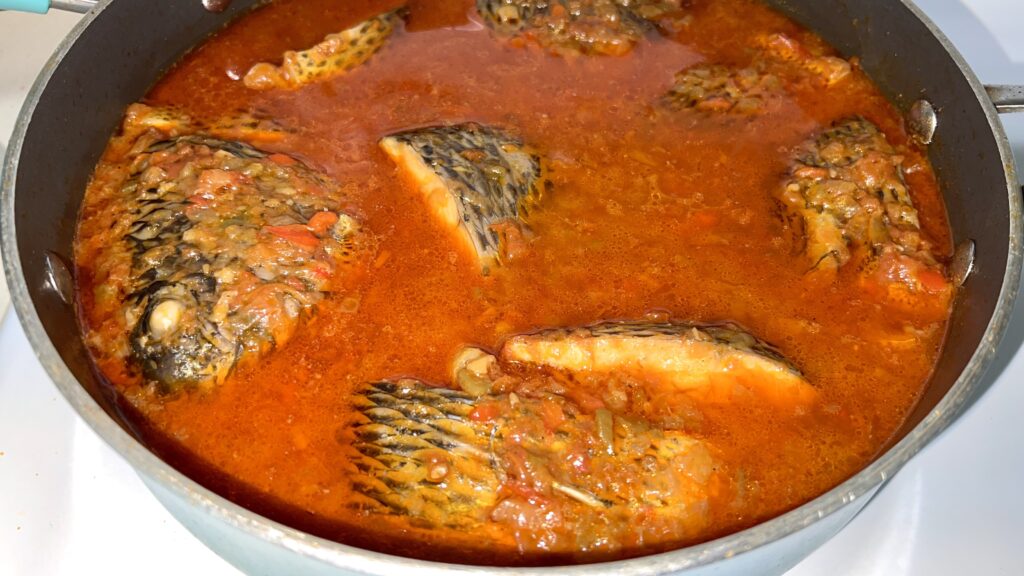
The Value of Tilapia
Some of tilapia’s desirable characteristics include its high nutritional value (proteins, vitamins, minerals, omega-6 fatty acids, etc.), its relative leanness compared to fishes like salmon, fewer calories, and a milder taste. In addition, tilapia has lower levels of mercury compared to fishes like tuna, shark, and swordfish. Healthline notes that it is one of the best and safest fish to be consumed by young children and pregnant or breastfeeding mothers. The cherry on top of all this is that tilapia is way much cheaper than most other fishes. And, when cooked to perfection as I describe in this post, it tastes as awesome as no other. So, why not make this delicacy part of your regular diet?
Where to Buy Whole Tilapia in the United States
It is much easier than I had initially thought to find whole tilapia in the United States. I have found it in larger grocery stores like Walmart, Costco, Kroger, and Meijer, as well as in some smaller grocery stores that attend to specific populations such as African stores and Asian stores. In all cases, whole tilapia is usually either frozen and packaged in bags of around three or refrigerated in single or double packaging. Just check the seafood area in your local store or ask the store attendants for it. No more missing out!
Different Ways to Cook Tilapia
Tilapia can be cooked whole as we traditionally do in Kenya, it can be cut up and prepared as fillet. The fillet can be cooked in serving-size pieces or further cut into cubes or ‘fingers’ before cooking. As for the methods of cooking, tilapia can be fried, stewed, baked, grilled, or boiled. It is a fish that is easy to prepare, and it cooks really fast. In this recipe, I demonstrate how to make fresh tilapia stew. Compare this with my other recipe for whole fried tilapia stew in which I fried and then stewed the fish, or my traditional recipe for smoked tilapia in groundnut butter sauce. Both recipes are also absolutely amazing, and you might want to try them too.
Ingredients for Fresh Tilapia Stew
Whole fresh tilapia: I used three 3 pieces in this recipe just because that’s how they are packaged in my local store, and the amount also suits my household. You can choose to make more or less fish at a time.
Red onion: Adds a nice aroma to the stew.
Garlic: Also adds a nice aroma to the stew. Garlic does a good job suppressing the fishy smell to a degree as well.
Bell peppers: these not only add to the flavor and colorfulness of the stew but also contribute to the thickness of the sauce in the end. I like to mix red and green for color, but it is not a must. One type can also do the job just as well.
Tomatoes: these also add to the flavor, colorfulness, and thickness of the sauce. I always use fresh tomatoes for this recipe as opposed to canned ones which may be too sour.
Cooking oil: for frying the ingredients.
Coconut milk: this is an optional ingredient but if you can use it, please do. The coconut flavor plus the creaminess of the milk does magic to all tilapia recipes.
Ground spices: I often use curry powder, paprika, and black pepper for a richer taste. These can change based on personal preferences. You can also choose to omit them altogether.
Water: you will add this to make the sauce in which you will boil the fish till it is thoroughly cooked.
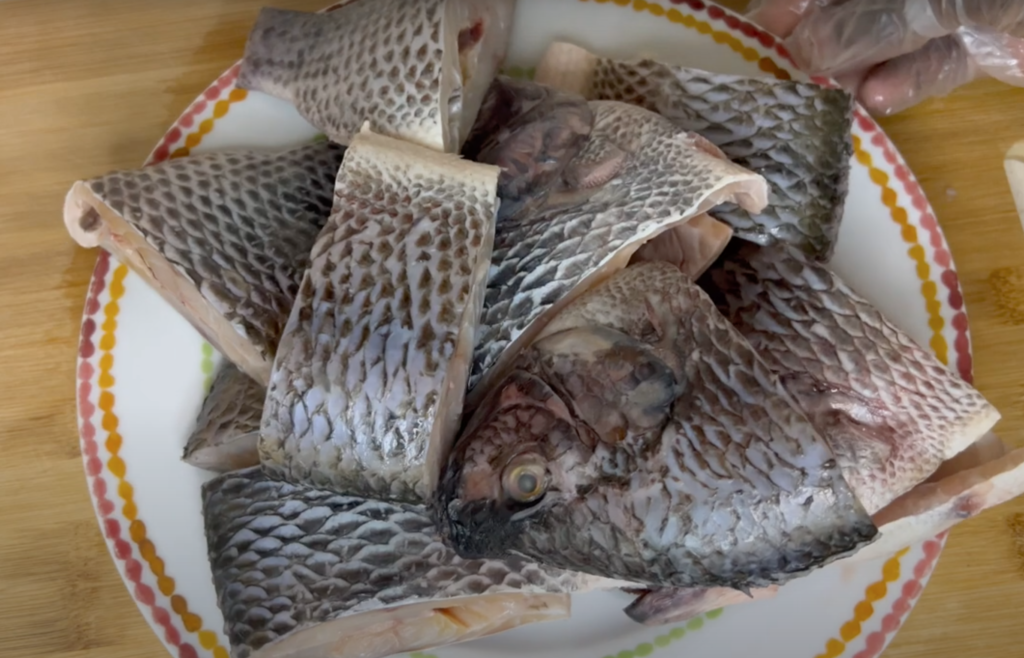
Steps for Preparing Fresh Tilapia Stew
Preparing the Fish
#1. Defrost the tilapia fully if frozen. You can place the whole pack on the kitchen counter for a few hours or take the fish out of the packaging and lay them out on something wide like a baking sheet to quicken the thawing process. To further quicken tilapia thawing, dip the fish into room temperature water, leave it for five minutes, and change the water. Change the water about three times and then either leave the fish in the water to continue thawing or lay them out on a wide surface to finish thawing.
#2. Wash the fish thoroughly in running water. Pay attention to the gills and the abdomen. Make sure those areas are clean. Tilapia is mostly packaged already descaled and with the abdomen emptied, which means all you have to do is wash the fish. That being said, make sure to check the fish well to confirm that those steps have already been done. Otherwise, you will need to do them yourself before cooking the fish.
#3. Lay the fish on a chopping board and use a sharp, heavy knife to cut each into pieces. I like to cut mine into three pieces, but you can also just halve each fish, or even cook them whole.
Cooking
#4. Wash and chop all the vegetables (onions, tomatoes, garlic, and bell peppers).
#5. Use a wide enough pan or pot to cook, especially if you are cooking larger pieces. Note that fresh fish requires minimal if any disturbance when cooking. That means you cannot stir to distribute seasoning. A wide pan will make your work easier with basting and later, serving.
#6. Heat cooking oil on medium-high and fry the onions until golden brown. It is always a good idea to fry the onions if you want to achieve optimal flavors. Add garlic just when the onions begin to brown, and fry until garlic begins to slightly brown too.
#7. Add bell peppers and fry until fully cooked. The vegetables will appear to shrink as they cook down.
#8. Add tomatoes and cook until a thick paste forms. Then, add ground spices (optional) and cook for a minute. Then, add coconut milk and stir.
#9. Add water and salt to taste. Stir to combine, then bring the sauce to a boil.
#10. Add fresh tilapia to the pot. Ensure each piece is immersed into the sauce or use a ladle to scoop the sauce and baste the tilapia on the top side.
#11. Cover, reduce the heat and simmer for 10-15 minutes. Do not stir the fish as it cooks as it is too soft and could easily break.
#12. Fresh tilapia stew pairs well with ugali, white rice, chapati, and green leafy vegetables such as kale and spinach among others. Find the recipe links for these serving suggestions below.
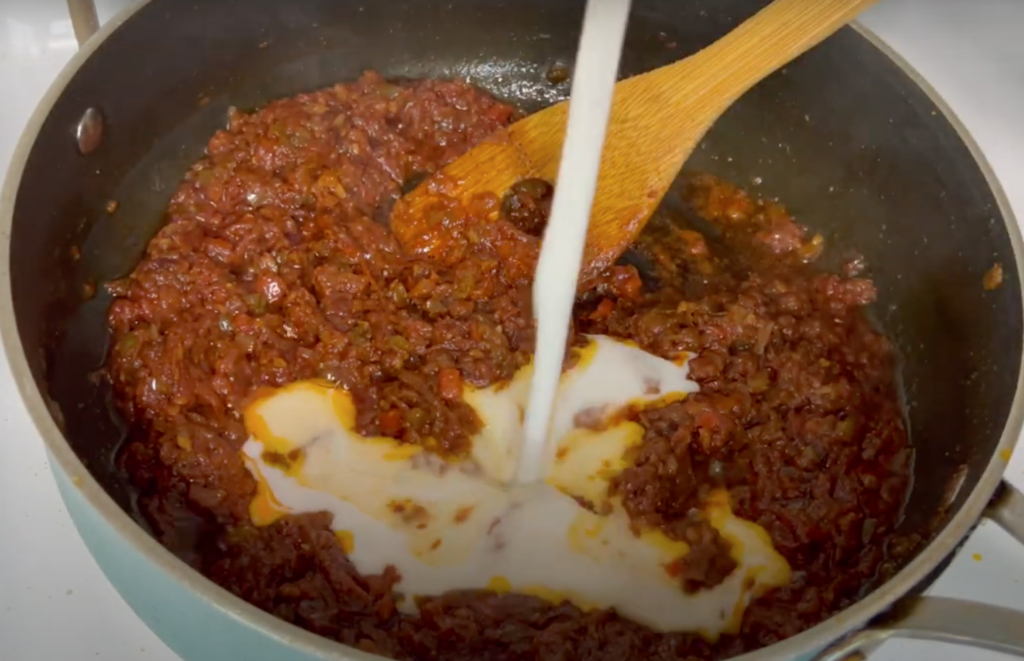
Serving suggestions for fresh tilapia stew
Serve your fresh tilapia stew with any of the following sides or a combination of sides. Linked to recipes.
- Perfect white rice
- Soft and delicious chapati
- Ugali
- Sautéed spinach
- Creamed spinach
- Sautéed kale
- Sautéed kale with eggplant and carrots
- Sautéed cabbage with carrots and bell peppers
Print the Recipe
How to Cook Fresh Tilapia Stew
Course: MainCuisine: East African, KenyanDifficulty: Easy6
servings10
minutes30
minutes256
kcal40
minutesFor a thicker sauce, add less water to simmer the fish.
Ingredients
Whole fresh tilapia – 3 pieces
Red onion – ½ cup (chopped)
Garlic – 1 tbsp (crushed)
Bell peppers – ¼ cup@ green and red
Tomatoes – 4 medium
Cooking oil – 1/8 cup
Coconut milk – 1/2 cup (optional)
Curry powder – 1 tsp (optional)
Paprika – 2 tsp (optional)
Black pepper ½ tsp (optional)
Water – 2 cups
Salt to taste
Directions
- Defrost the tilapia fully if frozen.
- Wash the fish thoroughly in running water. Pay attention to the gills and the abdomen. Make sure those areas are clean.
- Lay on a chopping board and use a sharp, heavy knife to cut each fish into pieces. I like to cut mine into three pieces, but you can also just halve each fish, or even cook it whole.
- Wash and chop all the vegetables (onions, tomatoes, garlic, and bell peppers).
- Use a wide enough pan or pot to cook. Heat cooking oil on medium-high.
- Add onions and fry until golden brown. Stir occasionally. Add garlic and fry until it just begins to brown.
- Add bell peppers and fry until fully cooked. The vegetables will appear to shrink as they cook down.
- Add tomatoes and cook until a thick paste forms. Then, add ground spices and cook for one more minute. Add coconut milk and stir.
- Add water and salt to taste. Stir to combine, then bring the sauce to a boil.
- 10.tAdd fresh tilapia to the pot. Ensure each piece is immersed into the sauce or use a ladle to scoop the sauce and baste the tilapia on the top side.
- 11.tCover, reduce the heat and simmer for 10-15 minutes. Do not stir the fish as it cooks as it is too soft and could easily break.
- 12.tFresh tilapia stew pairs well with ugali, white rice, chapati, and green leafy vegetables such as kale and spinach among others. Find the recipe links for these serving suggestions below.
Recipe Video

Storing leftover fresh tilapia stew
Cooked fish can be stored in the freezer for up to 3 months or in the fridge for up to four days according to the USDA. Place cooked tilapia in an airtight container and store it in either of these spaces depending on how soon you intend to use it.
Reheating leftover fresh tilapia stew
In the microwave: Place defrosted or refrigerated fresh tilapia stew in a large bowl or plate. Cover and heat it in the microwave for about two minutes or until hot enough. Handle the fish gently as it breaks easily.
On the stovetop: Place defrosted or refrigerated fresh tilapia stew in a pot and heat on medium-low until hot enough. If too dry, add a little water so you have some sauce to it.

Conclusion
Tilapia is an easily accessible fish that provides us with a great deal of essential nutrients. Also, it is easy to prepare, and it pairs well with numerous dishes. These are just a few of the reasons why you should, if you have not yet, make tilapia part of your regular diet. Give this recipe a try and explore my other tilapia recipes as well so that you can savor all of the various tastes that this fish can give.
